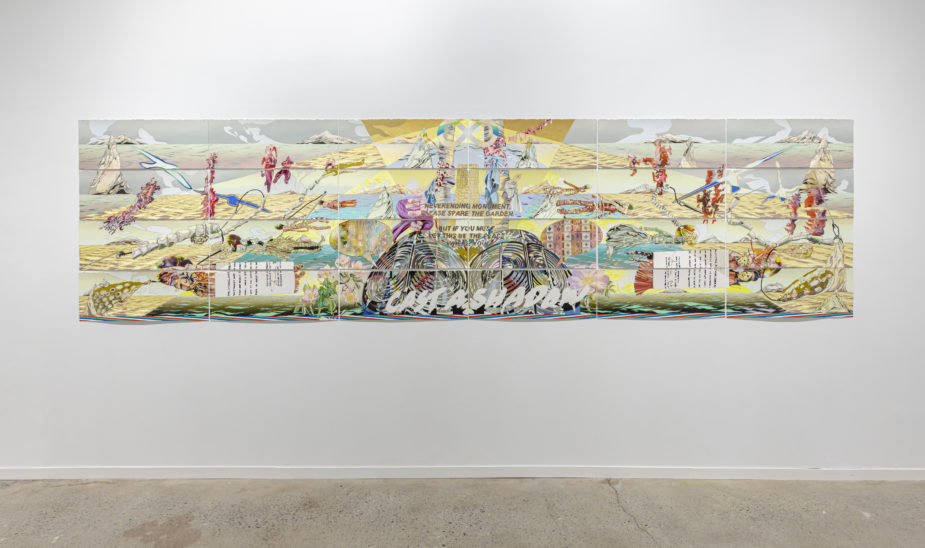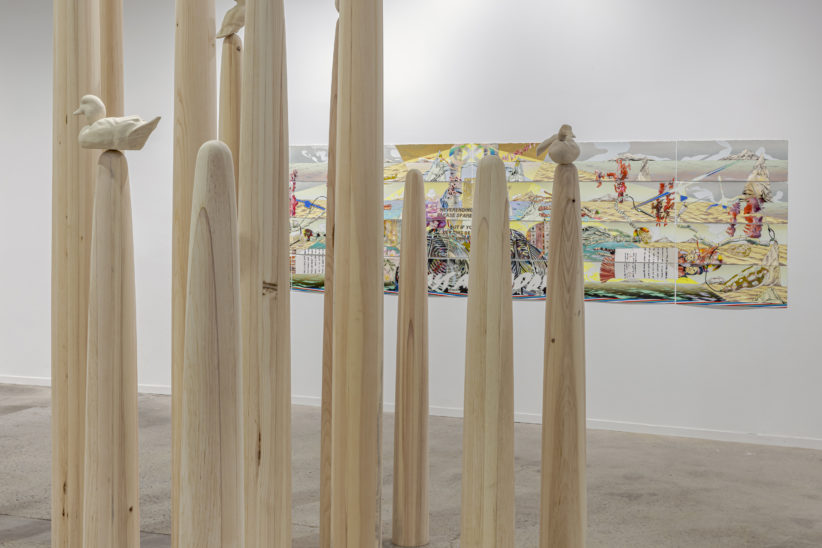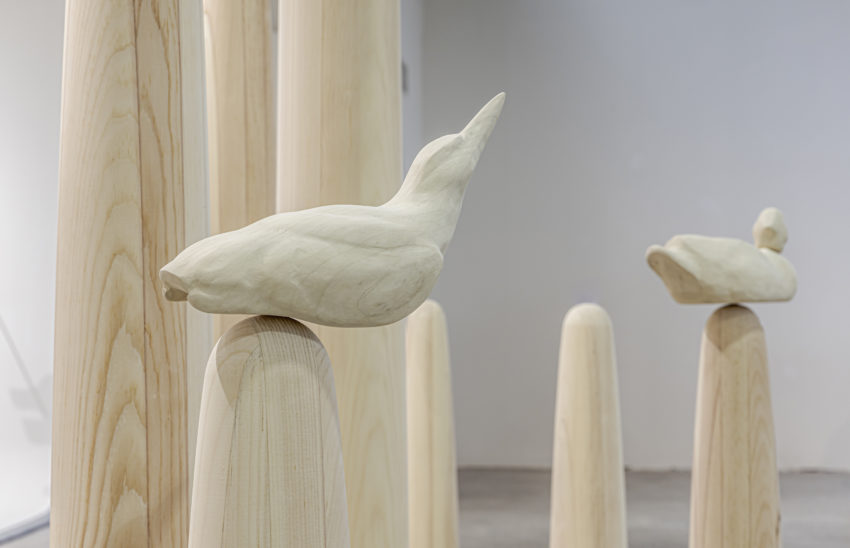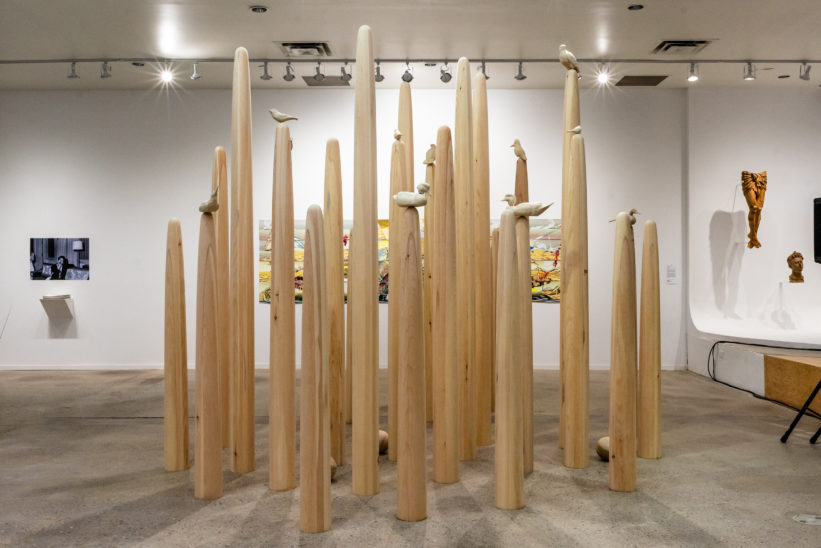Andrea Carlson’s Never Ending Monument (2022) is a sculptural installation that features a configuration of effigy staffs that function much in the same way as the artist’s two-dimensional drawings on paper: they play with perspective and horizon and the body’s sense of space and place. The sculptures cite the silhouetted figure of the “Man Mound,” a 214-foot-tall ancient earthwork in Wisconsin that is now fractured by a road (the bottom third of the original mound was destroyed with the building of the road and a cattle field and is now indicated by white paint). Andrea describes Man Mound as both a driving force and inspiration in her practice. For her, this figure that rises up from the land tethers us to non-colonial histories and ideologies, ones quite literally built into the land itself.
Man Mound is the only remaining anthropomorphic effigy mound remaining in the United States and is part of what anthropologists call the Late Woodland culture. Active between 600 and 900 AD, it is estimated that Late Woodland peoples created some 14,000 mounds across modern-day Wisconsin, southwest Minnesota, and eastern Iowa. The mounds functioned not simply as static symbols but as a way to bridge the natural and supernatural worlds. For some, the horns emerging from the head of the represented man signify a figure in transition between the real and the spirit world. This imagery is also a means of indicating one of the functions of the effigy mounds: those in the shape of animals or other supernatural beings often contained the remains of a person. Conical mounds, in contrast, contained the remains of multiple people.
A viewer must move around a mound in order to grasp its complete form. Andrea’s related multi-panel drawing, Cast a Shadow (2021), is presented in such a way that a variety of perspectives emerges as the viewer moves around the perimeter of the artist’s effigy staff. This idea of incorporating perspectival shifts in the two-dimensional picture plane is emblematic of the artist’s work. In earlier pieces, such as Ink Babel (2014), the push and pull of the eye, where figures were simultaneously emerging and receding, was inspired by film reels and how moving images are generated through multiple still images. In Andrea’s new installation, her effigy staffs appear to erupt from the picture plane, adding another dimension to the visual experience, which, like the mound itself, tethers us to non-colonial histories.
Co-commissioned by the Toronto Biennial of Art and FRONT International Cleveland Triennial for Contemporary Art and made possible with the generous support of the Women Leading Initiative.
Detailed Audio Description of Andrea’s work “Cast a Shadow”:
Audio Didactic:
Bio
Andrea Carlson (Ojibwe, born in 1979; lives in Chicago, USA) is a visual artist and writer currently living on unceded Potawatomi land in Chicago. Andrea’s paintings and drawings often depict shorescapes that the artist populates with images that are allegories of consumption, possession and display, while her temporary, outdoor artworks often address ideas of land and belonging. Her work is collected in institutions such as the Whitney Museum, New York; the Minneapolis Institute of Art, Minneapolis; and the National Gallery of Canada, Ottawa.
Location
- Accessibility
72 Perth Avenue
Wheelchair Access – Entrance
From Bloor Street: The accessible path to 72 Perth Avenue’s main entrance runs southbound along the east side to Besi’s Auto Collision. Cross the street to the west-side sidewalk in front of the fencing and continue south 20 metres. Automatic door activation is to the right of the double doors.From Sterling Road: Construction and lack of sidewalks are unfortunately an issue in this up and coming residential area. Travelling northbound, accessible pathways begin on the east and west-side of Perth Avenue. The main entrance of 72 Perth Avenue is at street level.
Outdoor Exhibition & Shelter
A portable ramp is available for the doorway from the main exhibition area to the outdoor area. An alternative accessible path is through the fence opening on the west side, 30 metres northbound from the main entrance.Washrooms
Accessible washrooms are located to the left of the main entrance.AODA-compliant building
- Getting There
72 Perth Avenue
Parking: Limited paid
TTC: Near Lansdowne station; Dundas West station; 505 Dundas and 506 Carlton streetcars
Other Transit: Steps away from the GO/UP Express Bloor station
Donors & Supporters

Partners





